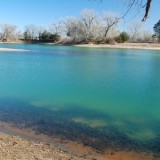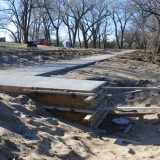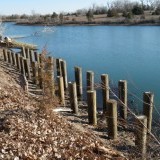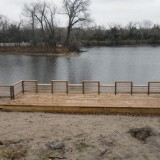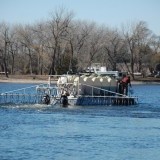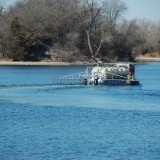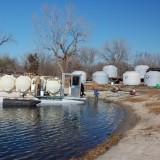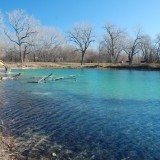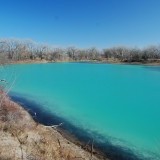
Projects
Fremont Lakes Angler Access Improvement Project and Alum Treatment
Project Client: Nebraska Game and Parks
Project Location: Fremont, Nebraska
Project Categories: Lakes
TFG was hired by the Nebraska Game and Parks Commission for the design of angler access improvements, lake mapping, and oversight of alum treatment at the Fremont Lakes State Recreation Area west of Fremont, Nebraska. Angler access improvements include construction of small and large fishing piers, large floating piers, access trails to primitive areas, boat ramp improvements and handicap-accessible features.
Link for an article in the Fremont Tribune about the lake improvement project
For the lake mapping component of the project, TFG conducted bathymetric and shoreline survey. The survey data was reduced, filtered and analyzed to generate TIN surfaces of each lake. Contour depth maps and stage-storage data tables were created for each site. In addition to angler access improvements and lake mapping services, TFG defined the scope of service and conducted oversight for NGPC for the application of alum for water quality improvements. HAB Aquatic Solutions was hired by NGPC to apply alum to a number of the Fremont Lakes.
Why all the phosphorus in the sandpits of the Fremont Lakes?
Phosphorus is taken in by plants from the soil for growth. Nutrients enter the lake through decay of leaves and other organic matter and then accumulate over time on the lake bottom sediments. Phosphorus is released from sediments under anoxic conditions when a lake stratifies and oxygen is depleted from the lower layer. This released phosphorus results in algae blooms in the lake. Uncontrolled algae growth can clog these lakes with bluish-green scum, lead to fish kills and make then unsafe for fishing, boating, and water skiing.
This alum formulation (2 parts aluminum sulfate and 1 part sodium aluminate) is added to the lake from a boat (see project photos). When it contacts water, the formulation forms a “fluffy, cotton ball-like substance” known as colloidal aluminum hydroxide floc. This floc binds to phosphorus and then settles to the bottom of the lake. A chemical barrier is formed between the lake bottom and water. The floc binds and holds onto the phosphorus so that it can’t escape into the water above. By keeping the phosphorus on the bottom, lake algae is reduced. The treatment is supposed to remain effective for 5-10 years.

